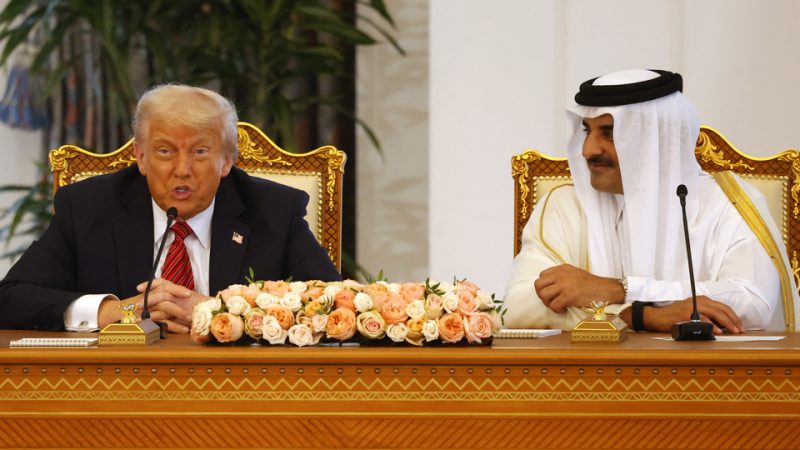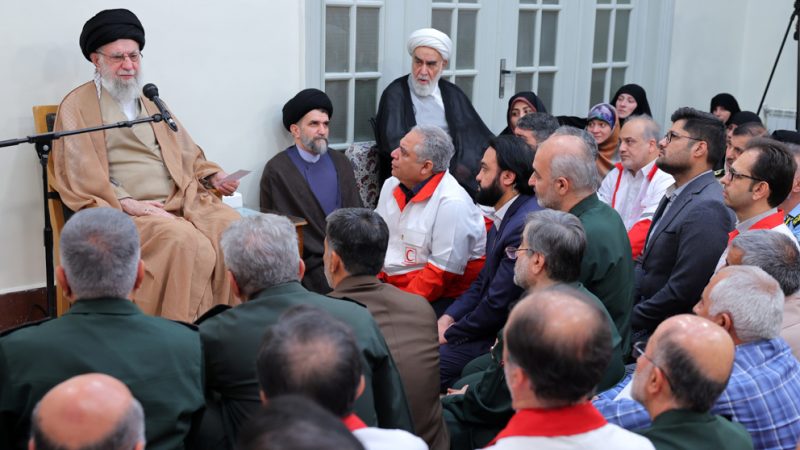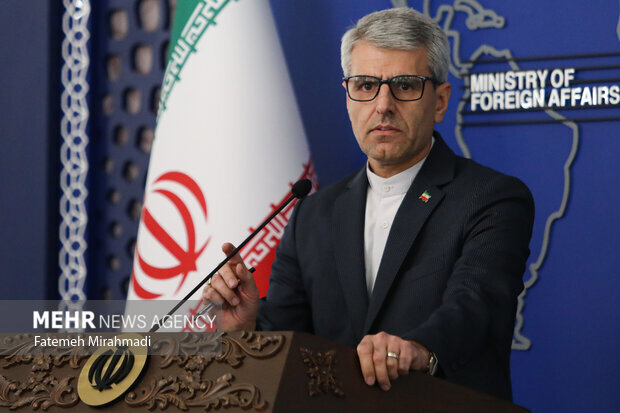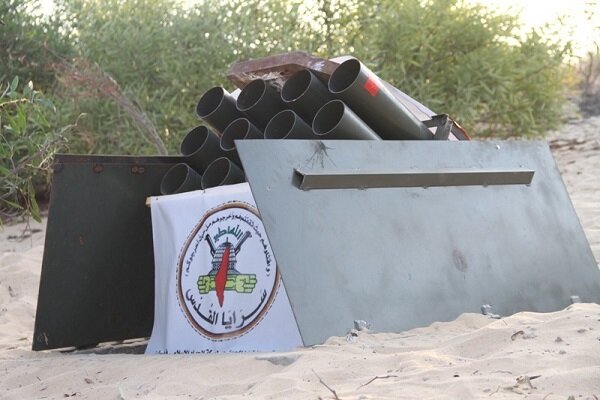Factbox: Trump’s off-the-cuff claims about ‘water crisis’ in Iran hold no water
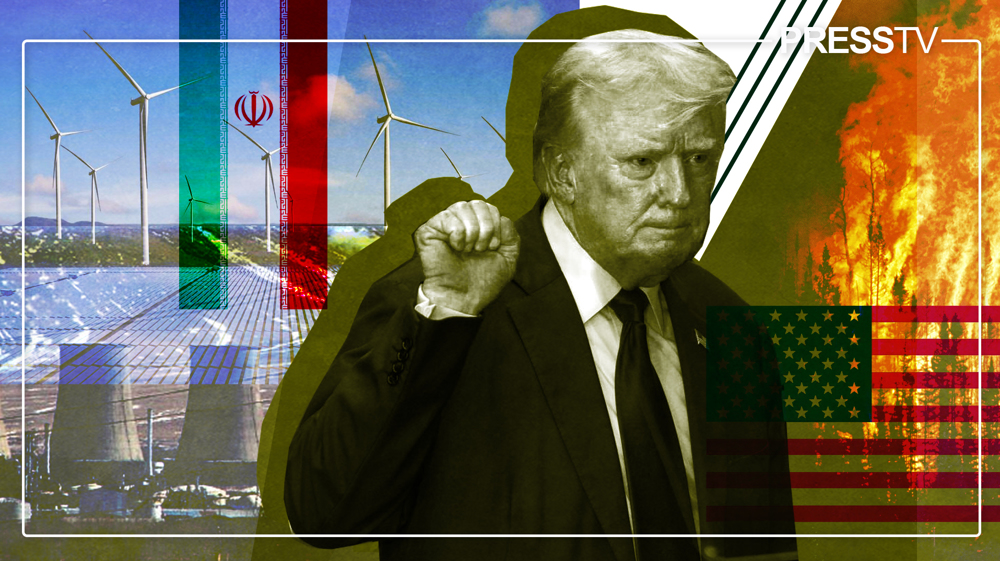
By Ivan Kesic
Speaking at the US-Saudi Investment Forum in Riyadh on Wednesday, US President Donald Trump launched a scathing attack on Iran, drawing on a familiar mix of baseless claims and inflammatory comparisons that align with longstanding American biases and propaganda.
Trump echoed deeply prejudiced remarks about Iran, primarily focusing on what he called a water crisis, mismanagement of natural resources, and systemic corruption.
However, these claims were riddled with inaccuracies, drawing on entrenched myths and biases perpetuated by anti-Iranian factions in the West, including high-ranking officials.
Trump’s absurd claims
In front of a receptive audience in the Saudi capital, Trump contrasted the infrastructural achievements of Persian Gulf states with what he described as Iran’s decay.
“While you have built the world’s tallest skyscrapers in Jeddah and Dubai, Tehran’s historical monuments have been collapsing and turning into rubble and dust since 1979,” he remarked.
Similarly, he contrasted Saudi Arabia’s achievements in transforming deserts into fertile land with Iran’s situation, claiming that the reverse process is taking place there.
“While your skill has turned dry deserts into fertile farmland, Iran’s leaders have managed to turn green farmland into dry deserts as their corrupt water mafia causes droughts and empty river beds,” he hastened to add.
He attributed Iran’s environmental issues, including droughts and desertification, to corruption and mismanagement by its leadership, and to what he called a “water mafia.”
Broadening his tirade, Trump referenced Iran’s “water crisis” as part of a larger narrative of failure, with claims that Iran’s leadership is spending financial resources on foreign financing of the Axis of Resistance.
“The greatest destructive force in the Middle East is Iran. Iran is causing destruction and devastation in Yemen, Iraq, Syria, Lebanon, and other countries,” he claimed.
Trump’s remarks formed part of a wider “maximum pressure” strategy to mount pressure on Iran amid ongoing indirect nuclear talks mediated by Oman.
While he has offered an “olive branch” for a “new and better path,” he has also foolhardily spoken of “massive maximum pressure” and zero oil exports if diplomacy fails.
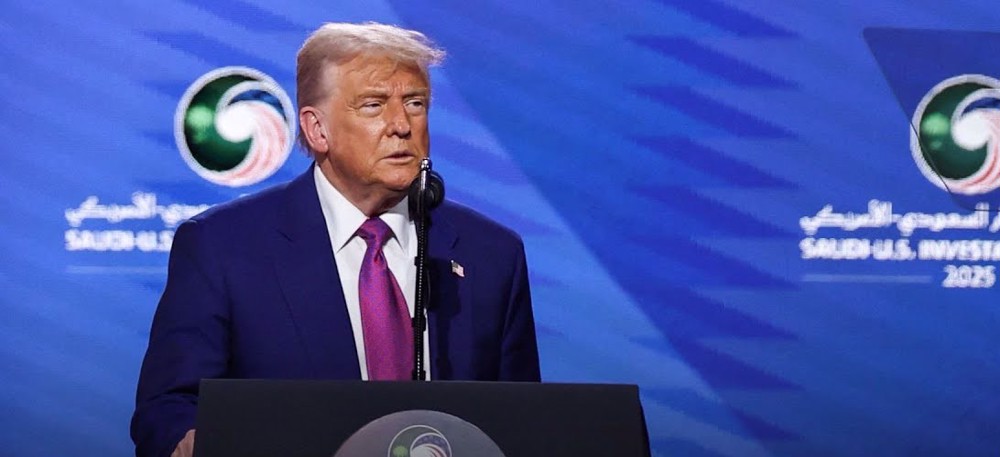
Iranian response
Iran’s Foreign Minister Abbas Araghchi dismissed Trump’s remarks about Iran’s progress and foreign policy, citing decades of US sanctions as the cause of internal issues and accusing him of whitewashing Israeli genocidal crimes.
Araghchi said what Trump “stated about the desire of the regional countries to enjoy a path of progress and prosperity is, in fact, the same path that the Iranian people chose with their revolution and took it to have an independent, democratic, free, prosperous, and advanced country.”
Araghchi touched on Trump’s renewed threat “to inflict massive maximum pressure” on Iran and portraying it as a “source of insecurity” in the region.
“The US President has ignored all of Israeli crimes in the region and is seeking to portray Iran as a threat; this is pure deception and a reversal of the source of threats. Which regime has killed 60,000 people in Gaza?” he asked.
“Who has caused this much destruction in Gaza? Which regime attacks the areas surrounding Palestine, including Lebanon, Syria, and Yemen? The extent of the occupation carried out by the Zionist regime in Syria in recent months is greater than the entire area of Gaza,” he added.
The Zionist regime has placed a nation in Gaza under economic siege, Araghchi reminded,
“All these issues are ignored, and at the same time, they try to portray Iran as a threat to the region so that the main menace is forgotten, but they will not succeed in this path either.”
Well-known propaganda methods
Trump’s statements were greeted enthusiastically on social media by various anti-Iran rabble-rousers who have been spreading similar canards for years, glorifying the overthrown dictatorship and blaming the Iranian government for every issue, including natural disasters.
Incoherent analogies with selective, unrepresentative photographs or distorted data have long been a favorite propaganda method of Zionists and their brothers in arms, the monarchists and members of the MKO terror cult, as well as the corporate Western media.
For example, during an interview with the late Iranian President Ebrahim Raeisi in September 2023, CNN journalist Fareed Zakaria presented him with a false contrast between the buildings of downtown Tel Aviv and the dilapidated suburbs of Tehran, suggesting that the Iranian authorities allegedly do not care about their population.
Zakaria also claimed in his questions that there is a “lack of development” in Iran, that the country is isolated, and that it “looks backward” compared to decades ago.
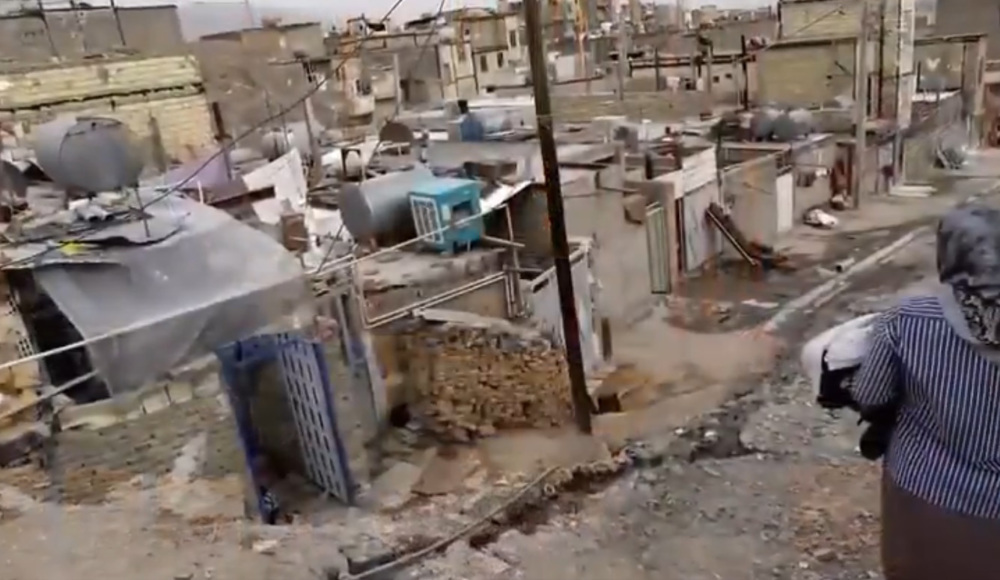
The former Iranian president’s responses were incisive and informative that debunking the myths perpetrated by the American leaders and their media.
“Why do you in the United States impede the dissemination of truth and not let it reach people? Why do you slap sanctions against news agencies? Why do you enforce bans on many youth networks in different parts of the world? Why do you prevent the echo of the voice of Iran and others and block it from reaching other people?” Raieisi asked Zakaria.
The manipulative images used by CNN to prove its theory dated back to March 2008, were clicked by Iranian photographer Behrouz Mehri, and showed the undeveloped suburban neighborhood of Ghaleh Hassan Khan with buildings built before the revolution.
Just a year later, in 2009, the neighborhood was razed to the ground and the area became a new city, Shahr-e Qods, witnessing major housing redevelopment with modern infrastructure.
Despite the modern availability of thousands of online photos from the Iranian capital, CNN selectively took outdated and irrelevant photos, with the obvious intention of misleading its audience with a false perception of Iran’s “backwardness.”
Fact-checking Trump’s construction claims
The claims made by Trump relied on the same misleading contrast, using selective and distorted examples—on one side, the striking super-tall skyscrapers of Saudi Arabia and the UAE, and on the other, a false narrative of the decay of Tehran’s historical monuments.
The emphasis on 1979 romanticizes a period when Iran was ruled by an absolute monarchy and functioned as an American client state, portraying it as an era of supposed progress.
While the towering structures in Jeddah and Dubai are undeniably impressive, they offer little insight into genuine national development.
These projects were designed by foreign architects, constructed by international firms using imported materials and technologies, and often built by migrant labor. Their funding largely depends on foreign currency earned from oil exports, facilitated by foreign technology – a model that closely mirrors the dynamics of pre-revolutionary Iran.
In contrast, today’s Iran and particularly Tehran sets itself apart from these cities, as well as from other major Asian metropolises, including Beijing, by building its landmark structures such as towers, skyscrapers, and stadiums through domestic architects, local firms, homegrown materials, and Iranian labor.
This reflects a fundamentally different model of development—one grounded in national capacity and self-reliance.
Iran has not only avoided degradation or stagnation over the past 50 years but is an example of a country that has achieved remarkable progress in infrastructure development, largely through self-sufficiency.
In 1979, Iran was predominantly rural, with the majority of its population residing outside urban areas. By 2023, the urban population had surged to 77.26 percent, significantly surpassing the global average of 61.36 percent.
This transformation was propelled by comprehensive infrastructure development, industrialization, and population growth, culminating in the establishment of over 1,300 cities, more than triple the number before the 1979 revolution.
The construction sector experienced a profound shift in materials and methods in this period.
Prior to 1979, fewer than 25 percent of homes were built with durable materials like steel and concrete, while approximately two-thirds were constructed using perishable materials such as mud bricks, wood, and straw.
Despite the challenges posed by the Iran-Iraq War, the early post-revolution years saw the proportion of durable housing double, and the use of non-durable materials halve.
Between 1990 and 2010, the prevalence of unreinforced masonry buildings plummeted from 90 percent to 23 percent, while the share of steel and concrete structures soared from 3 percent to 74 percent.
By the 2011 census, Iran had 20 million housing units, with an astounding 90 percent constructed after the revolution, compared to a mere 10 percent under the Pahlavi regime.
Contrary to claims about the deterioration of Iran’s historical monuments, the Pahlavi regime, which was backed by the West, largely neglected the preservation of Qajar-era buildings, leading to their decay or deliberate destruction in the name of modernization.
In contrast, contemporary Iran has made significant strides in safeguarding its architectural heritage. Thousands of buildings from both monarchical periods are now listed on the national register, including palaces of deposed monarchs and mansions of former elites.
Many of these structures have undergone meticulous restoration, such as the Qajar city gates in Tehran, which were destroyed during the early Pahlavi era.
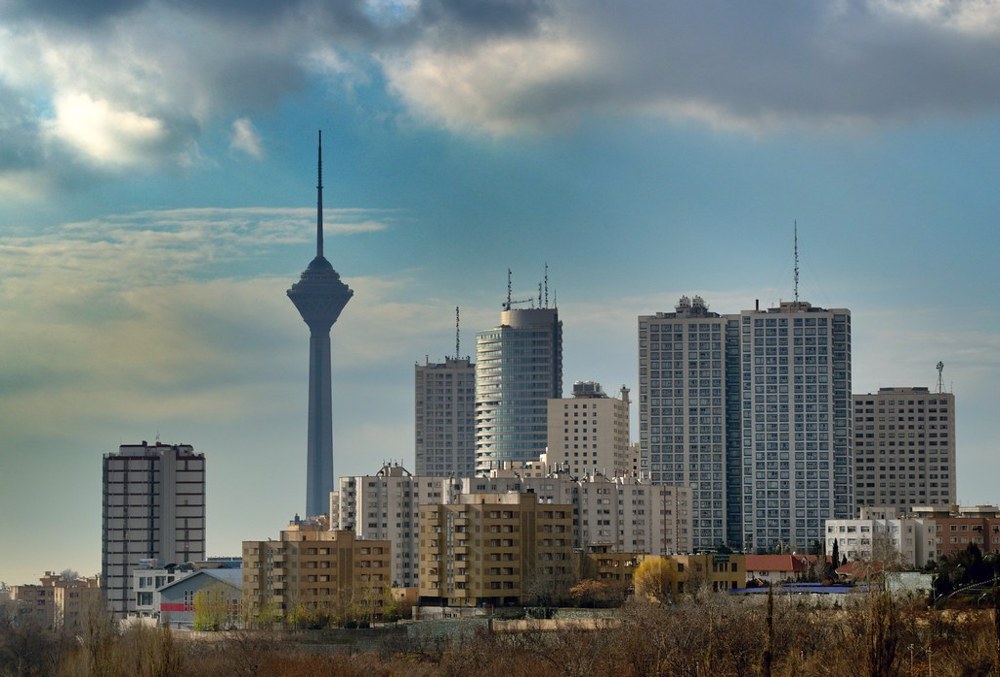
Fact-Checking Trump’s Water Claims
Trump’s assertion that Iran has transformed its “green farmlands into dry deserts” is an exaggeration that overlooks the facts and reflects a double standard when compared to similar issues in the United States.
Once again, the US president employed an incoherent analogy, citing Saudi Arabia as a contrasting and positive example of turning desert into fertile soil.
While Saudi Arabia has indeed made progress in irrigation and water supply, thanks to foreign knowledge, companies, and technology, their results are actually below the level of Iran.
Most of Iran’s territory lies in hot, dry zones and, like much of the world, faces water issues due to climate change, droughts, overexploitation, and foreign policies (including disputes with Afghanistan), but these challenges are far from catastrophic.
According to relevant international data, Iran uses 1,110 cubic meters of water per capita per year, ranking twelfth in the world, well ahead of Saudi Arabia (747) and slightly below the US (1,340).
Iran’s percentage of access to urban and rural drinking water is 96.1 and 87.2 percent, respectively, ranking 19th and 9th among countries worldwide.
At the beginning of the Islamic Revolution, urban access to safe, hygienic, and sustainable water was 74.6 percent, which increased to 99.87 percent at the beginning of the 13th government in 2021. Also, only 12 percent of the country’s rural population had access to drinking water in 1979, but with sustained efforts, this rate rose to more than 85 percent.
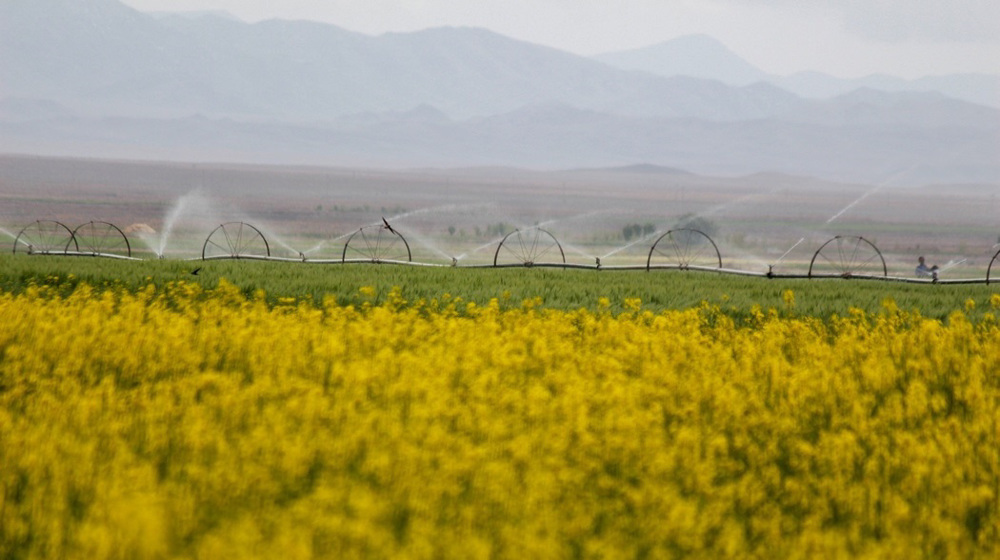
According to data from the Food and Agriculture Organization of the United Nations (FAO), Iran irrigates 88,478 square kilometers of land, ranking fifth in the world, after India, China, the USA, and Pakistan.
This ranking is even more remarkable considering that these four countries possess huge rivers with abundant water, whereas Iran’s largest river, the Karun, has a flow of only 575 cubic meters per second.
Furthermore, Iran is unique among ancient civilizations in that it did not emerge in the valleys of large rivers, but rather was built upon the ancient innovation of underground irrigation canals known as qanats.
Sophisticated irrigation and water supply projects continue to this day, including a multibillion-dollar initiative to transfer 2.4 cubic kilometers of desalinated water from the Indian Ocean into the Iranian interior, all the way to Mashhad.
The results of Iranian irrigation are also evident in agricultural production data, as the country now ranks among the world’s top ten producers of most fruits and vegetables.
Since the revolution, Iran has also gained recognition as one of the largest dam builders in the world, alongside China and Turkey, with hundreds of projects across the country.
The dams have been the subject of bizarre, politicized accusations of being “useless,” yet during recent torrential floods, they proved effective by filling to capacity and saving thousands of lives in downstream settlements.
In addition to irrigation, Iran has achieved success in afforestation, with forested areas increasing every year. Iran’s forests expanded by 15% in the first 20 years of this century and are now comparable in size to those of Germany.
On the other hand, recent Saudi irrigation has relied on fossil aquifers, which have largely been depleted, resulting in the shutdown of numerous irrigation project.
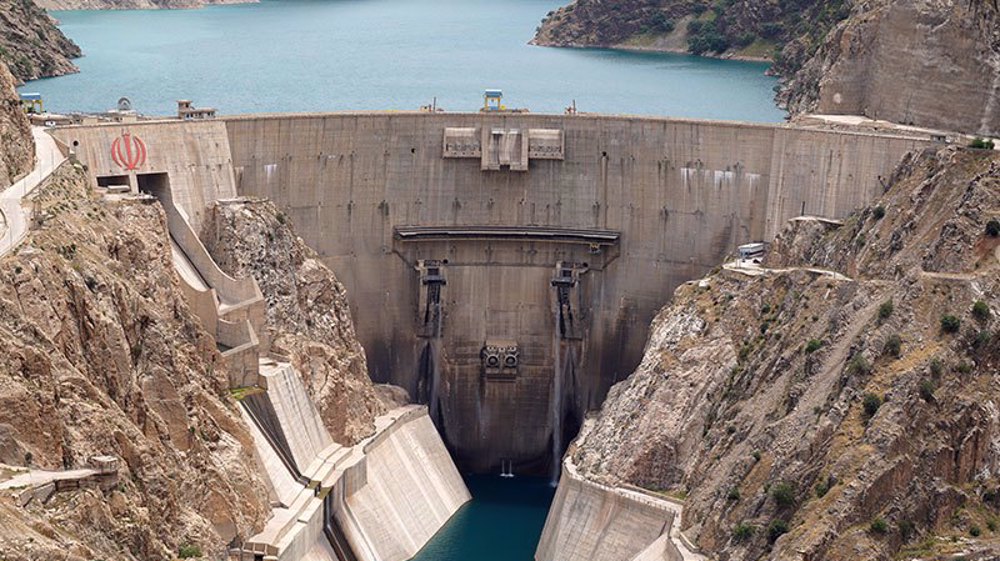
The gloomy picture in the US
On the other hand, when we analyze the situation in the United States, reports suggest that the country continues to grapple with a multifaceted water crisis, defined by infrastructure failures, contamination and disparities.
According to the Environmental Protection Agency (EPA), the US loses approximately 2.1 trillion gallons of drinking water on an annual basis due to leaks and inefficiencies in its 2.2 million miles of pipes, which shows the aging water infrastructure in the country.
Biden administration had pumped $3 billion into replacing these damaged pipes but experts believe it’s not enough, as US taxpayers money mostly goes to the Israeli regime and Ukraine.
There are many reasons across the US that are experiencing acute water shortage while many are forced to consume contaminated water. In Mississippi, for example, reports say residents have little access to safe drinking water due to flooding, aging infrastructure, and inadequate maintenance.
Similarly, in the Virgin Islands, one district had to declare state of emergency in late 2023 after high and dangerous level of lead and copper were found in the tap water, putting health of people in danger.
Forests in the US are also at risk due to the waves of wildfires, particularly in the Western states, making experts believe that the balance between economic interests and environmental protection isn’t there.
The United States is one of the largest consumers and producers of timber globally, and this contributes deforestation, especially in Washington, Oregon and Georgia, as authorities watch mutely.
Rapid urban growth has also led to deforestation, with forests turning into residential areas, commercial spaces, and infrastructure projects, as the government prioritizes economic interests over environment.
While the government claims to have enacted environmental laws, its policies and actions have largely been influenced by political ideologies, industry interests, and misplaced priorities.
Despite early awareness of environment and climate issues, the successive US governments have failed to implement comprehensive policies. The major factor has been the fossil fuel industry that has exerted considerable influence on US environmental policy at the cost of people’s health.
Under Trump, the US also withdrew from key international environmental agreements, including the Paris Agreement, which was a blow to the environmental protection globally.
The waste of natural resource in the US is another significant issue, which is driven by both government policies and corporate practices.
US governments have often been slammed for inefficient land management practices. Apart from that, federal subsidies for fossil fuel industries have encourage waste non-renewable resources.
US has also been reported to export significant amounts of hazardous waste to countries with less stringent environmental regulations. For example, over 1 million tons of toxic waste are shipped annually to Mexico and Canada, leading to pollution and health risks in recipient communities.

